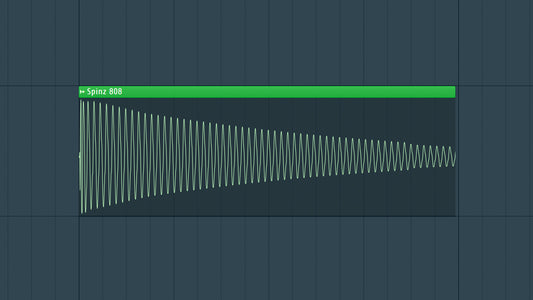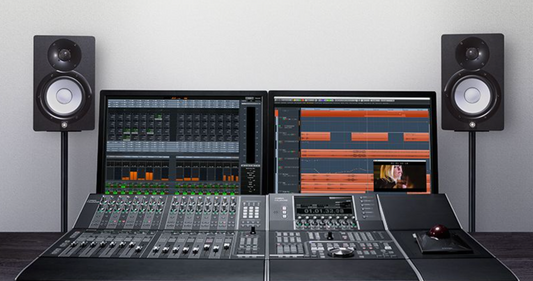Introduction
One of my personal favorite skills I have learned as a music producer for 15+ years is how to chop vocals! Chopping vocals is a transformative skill that allows music producers to manipulate and rearrange vocal elements, creating unique textures and patterns within their compositions. Whether you're aiming for rhythmic intricacy, melodic innovation, or crafting dynamic vocal stutters, the art of vocal chopping adds a layer of creativity to your production toolkit. In this blog, we'll explore step-by-step techniques on how to effectively chop vocals, providing you with the tools to elevate your music production game.
DOWNLOAD 20+ SAMPLE PACKS FOR FREE - CLICK HERE

1. Choose the Right Vocal Sample: Setting the Foundation
Selecting a Suitable Acapella:
- Begin by choosing a vocal sample that aligns with the mood and genre of your project. Ensure the acapella has clear phrases or sections that can be isolated and manipulated effectively.
Consider Vocal Characteristics:
- Pay attention to the emotional delivery, pitch, and tonality of the vocals. This will influence the creative choices you make during the chopping process.
2. Set the Tempo and Key: Establishing Musical Context
Match Tempo with Project:
- Ensure that the tempo of the vocal sample aligns with the tempo of your project. Adjust the vocal sample's speed or pitch if needed to maintain synchronization.
Identify Key Information:
- Determine the key of the vocal sample, and adjust it if necessary to fit your project's key. This ensures harmonic coherence with other musical elements in your composition.
3. Familiarize Yourself with the Vocal Phrasing: Analyzing the Structure
Deconstruct Vocal Sections:
- Listen to the vocal sample carefully, identifying distinctive phrases, verses, choruses, and ad-libs. Understanding the structure aids in making informed decisions during the chopping process.
Mark Key Points:
- Use markers or annotations to highlight key points in the vocal sample, such as impactful lines, transitions, or vocal nuances that you want to emphasize.
4. Utilize Your DAW's Tools: Precision in Chopping
Grid Snapping and Quantization:
- Enable grid snapping in your Digital Audio Workstation (DAW) to ensure precise alignment of vocal chops. Utilize quantization settings to further refine the timing of your chops.
Use Marker Tracks:
- Some DAWs offer marker tracks or regions that allow you to visually organize and label vocal sections. Utilize these features to streamline your chopping workflow.
5. Experiment with Different Chopping Techniques: Unlocking Creativity
Straight Cuts:
- Begin with straightforward chops at consistent intervals, creating a rhythmic foundation. Experiment with different chop lengths to determine the rhythmic feel you want.
Syncopated Chops:
- Introduce syncopation by varying the lengths of your vocal chops. This adds a dynamic and unpredictable element to the vocal arrangement.
Pitched Chops:
- Explore pitch-shifting individual chops to create melodic variations. This can result in unique and unexpected harmonic progressions within the vocal arrangement.
6. Apply Effects and Processing: Shaping Vocal Chops
Time-Based Effects:
- Experiment with time-based effects such as delay or reverb to add space and depth to your vocal chops. This enhances the overall atmosphere and character of the vocals.
Pitch Correction:
- Apply subtle pitch correction to ensure that your vocal chops align with the key of your composition, especially if you've introduced pitch variations.
7. Create Vocal Stutters and Glitches: Enhancing Dynamics
Stuttering Techniques:
- Experiment with stuttering techniques by rapidly repeating short vocal snippets. This creates a glitchy, rhythmic effect that can add excitement to your arrangement.
Use Automation:
- Utilize automation in your DAW to control parameters like volume, pitch, or effects over time. This adds dynamic movement to your vocal chops, making them more expressive.
8. Build Arrangements with Vocal Chops: Crafting a Narrative
Arrange in Sections:
- Organize your vocal chops into sections, mirroring the structure of your project. This may include creating verses, choruses, and transitions using the chopped vocal elements.
Layering and Harmonizing:
- Experiment with layering different vocal chops to create harmonies or juxtaposing contrasting vocal textures. This builds complexity and interest within your vocal arrangement.
9. Practice Subtlety: Less is More
Selective Placement:
- Avoid overcrowding your arrangement with vocal chops. Selectively place impactful chops, allowing moments of simplicity to shine through and enhancing the overall effectiveness.
Consider Phrasing:
- Pay attention to the natural phrasing of the original vocals. Ensure that your chops maintain a sense of coherence and flow within the context of the song.
10. Refine and Iterate: The Iterative Process of Creation
Listen Critically:
- Regularly listen to your arrangement, both in isolation and within the context of the entire track. Identify areas that may need refinement or adjustment.
Seek Feedback:
- Share your work with peers or fellow producers to gain valuable feedback. External perspectives can provide insights and suggestions for improvement.
DOWNLOAD 20+ SAMPLE PACKS FOR FREE - CLICK HERE
Conclusion
Vocal chopping is a versatile and expressive technique that adds a layer of creativity to your music production. By carefully selecting and deconstructing vocal samples, experimenting with chopping techniques, and incorporating effects, you can craft dynamic and engaging vocal arrangements. Whether you're aiming for rhythmic intricacy, melodic innovation, or emotional impact, vocal chopping opens up a world of possibilities. So, embrace the art of vocal manipulation, and let your creativity soar as you transform vocal snippets into a compelling sonic narrative. Happy chopping!




